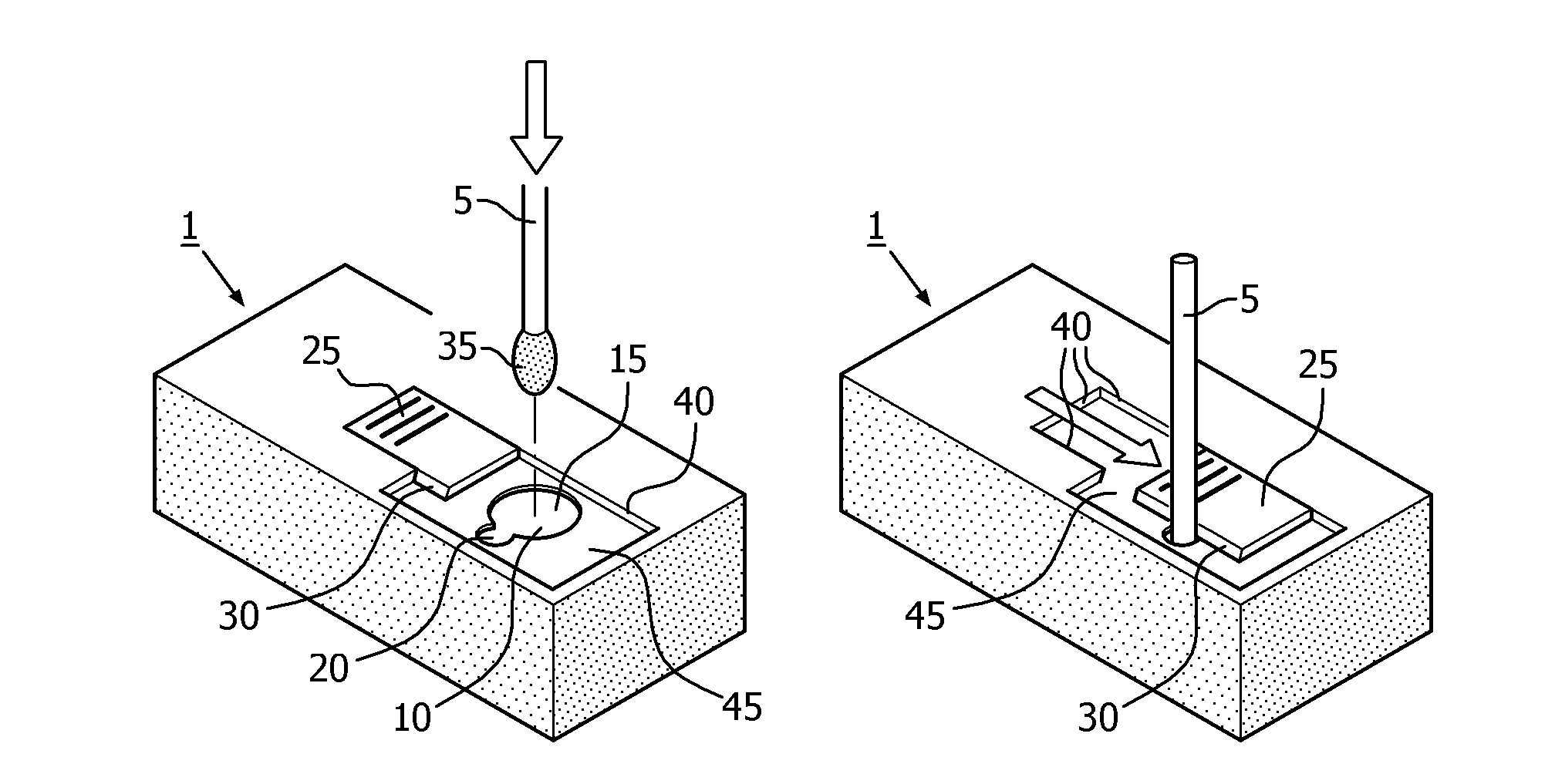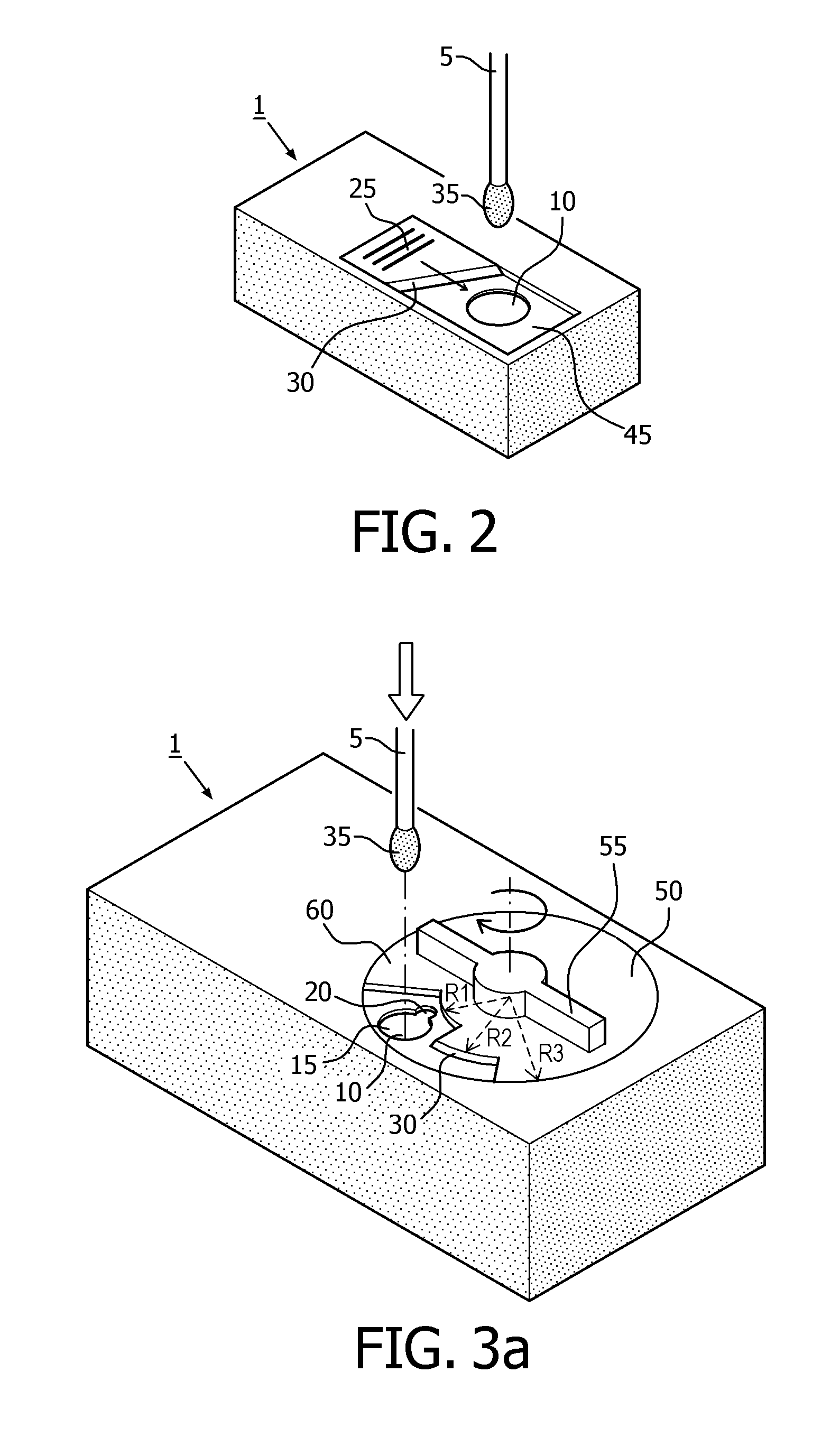Treatment of a sample with focused acoustic energy
- Summary
- Abstract
- Description
- Claims
- Application Information
AI Technical Summary
Benefits of technology
Problems solved by technology
Method used
Image
Examples
Embodiment Construction
[0038]FIGS. 1a through 1d schematically show an embodiment of a device according to the present disclosure. FIG. 1 shows a device 1 which may be a cartridge insertable into an instrument for handling the cartridge. The cartridge may be a molecular diagnostics cartridge for testing, for instance, a saliva or stool sample. The cartridge is insertable into an instrument suitable for processing a sample in the cartridge in the sense that the instrument may provide, for instance, heating, cooling, cell lysis, and data acquisition services for the sample in the cartridge.
[0039]FIG. 1 further shows a sample carrier 5 which is, in this case, a swab. Alternatively, the sample carrier may be a brush, a stick, etc. Usually, the sample carrier 5 has a rodlike shape. The device 1 comprises an opening 10 for receiving the sample carrier 5. The arrow in FIG. 1a indicates the sample carrier 5 moving towards and partially into the opening 10. In this particular embodiment, the opening 10 comprises a...
PUM
| Property | Measurement | Unit |
|---|---|---|
| Length | aaaaa | aaaaa |
| Width | aaaaa | aaaaa |
| Dimension | aaaaa | aaaaa |
Abstract
Description
Claims
Application Information
 Login to View More
Login to View More - R&D
- Intellectual Property
- Life Sciences
- Materials
- Tech Scout
- Unparalleled Data Quality
- Higher Quality Content
- 60% Fewer Hallucinations
Browse by: Latest US Patents, China's latest patents, Technical Efficacy Thesaurus, Application Domain, Technology Topic, Popular Technical Reports.
© 2025 PatSnap. All rights reserved.Legal|Privacy policy|Modern Slavery Act Transparency Statement|Sitemap|About US| Contact US: help@patsnap.com



